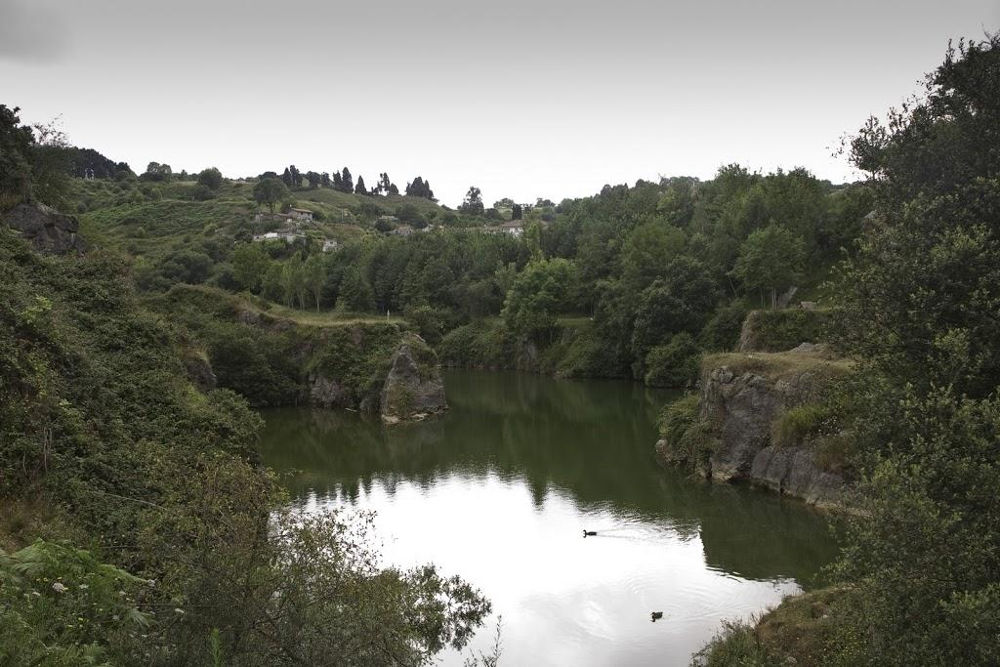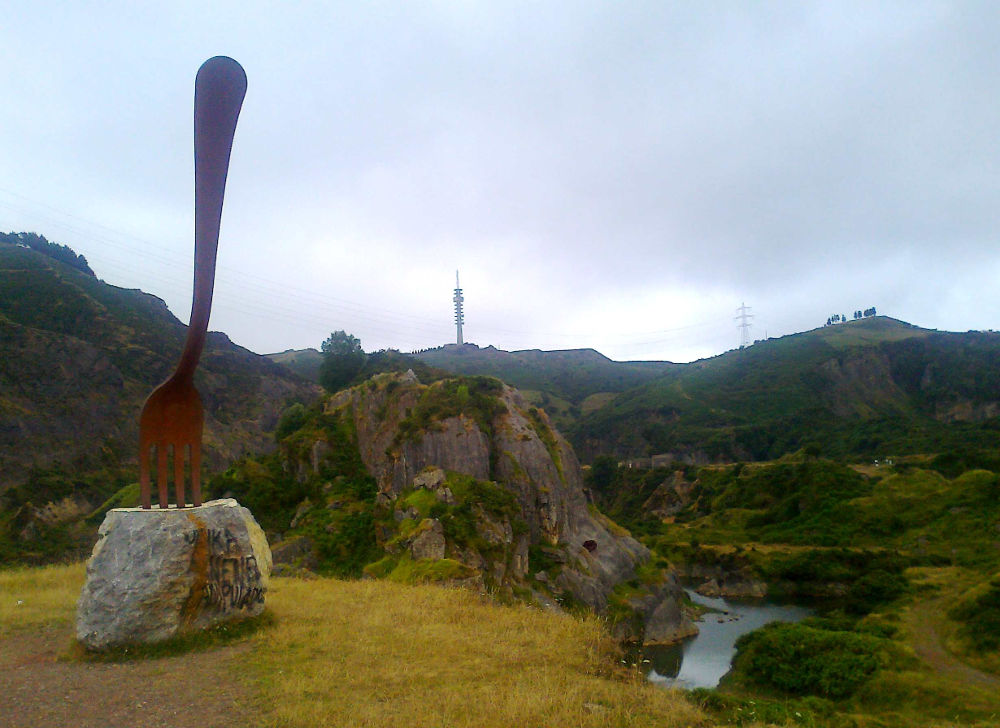La Arboleda
Trapagaran or Valle de Trápaga (Trápaga Valley) is a small town in the Basque country (Biscay, Spain), now part of what is known as Gran Bilbao. In the upper part of Trapagaran situated in the Triano hills are the hamlets of La Arboleda, Matamoros-Burzaco, and Parcocha-Barrionuevo y La Reineta. This is one of the biggest mining enclaves in southern Europe.
Archaeological remnants of ceramics from the Copper and the Bronze era as well as archaeological remains of a furnace from the 3rd‒4th century have been found in the area. In addition, a discoidal stela that dates to the beginning of Christianity has been excavated in the region. www.bizkaia.net
From Roman times through to the twentieth century, when reserves were exhausted, iron extraction took place here. It is known that in his Natural History the Roman scholar Pliny the Elder (23‒79 AD) said that there was a mountain of iron in the Triano hills.1 This mountain no longer exists because of open-cast iron extraction between 1876 and 1930.
Modern development of the town is due to the mining industry. A cable-railway system was built at the end of the nineteenth century connecting the lower and upper part of the valley (1,200-meter elevation) and was used to transport the extracted iron. This, along with other infrastructural innovations, led to the settlement of the mining community in the upper part of the valley.
As iron reserves were depleted and mining ceased, the community declined but did not disappear. The village is still inhabited today. As is often the case in open-cast mines in places where there is considerable precipitation, former mines are filled by surface water; in Trapagaran three lakes or ponds have been created. The scarring from the past mining activity is still visible today. www.en.bilbaogreeters.com
Image source: en.bilbaogreeters.com
The brown water of another of the three ponds, Parkotxa, is a legacy of the 1970s. Mud was dumped in there from the treatment plant, which was the last part of the mining industry in the region to close down. This once-thriving little village, which had twenty-four bars, a forty-six-piece village band, hostels and schools, a cinema and theater, and even a police station, is now mainly residential with a few bars and restaurants. It has become a popular recreational destination, with visitors mainly from Greater Bilbao and beyond. The traditional dish of the miners, a bean stew, is famous in the region and many village restaurants serve it. Today, the area surrounding the water-filled mines is a recreational park (Peñas Negras) with picnic and barbeque facilities. It is popular for fishing (swimming is not permitted), walking, biking, and horse-riding. Although the original mining infrastructure is no longer extant, there is a mining museum. The village itself has some interesting features: for example, while its architecture is of a style unique in the Basque country, the same construction is seen in a number of mining communities around Asturias and Cantabria. Perhaps also worthy of note is the fact that, with many of the miners coming from outside the Basque country, some of the local toponyms were “castilianized” (for example, Larrañeta to La Reineta). In socioeconomic terms, the importance of Trapagaran extends well beyond the village itself, as the mining industry enhanced Bilbao’s economic development a great deal. Although small-scale ironworks already existed in the area, 1902 saw an English‒Basque partnership that culminated in the creation of the Biscay’s emblematic Altos Hornos (a huge ironworks complex). With its mineral resources and proximity to the seaport, and the area’s metallurgical tradition, Bilbao was a prime location. After the Spanish Civil War, during Spain’s rural exodus, the Basque industry attracted people from all over the country. Altos Hornos turned out to be crucial for Bilbao’s industrialization.
Past and present interconnections
- Unfortunately we know little about how the early mineral exploitation and possible settlements connect (or overlap) with the more recent ones.
- The landscape has changed considerably (certainly since industrial exploitation in the nineteenth century): with human settlement, mining infrastructure, the disappearance of a mountain, and the appearance of three new lakes. The vegetation has also now largely recovered from the scars inflicted by open-cast mining activity.
- The cable railway has become a tourist attraction and the area has a heritage center relating to the history of Bilbao’s mining past. One of the sociopolitical implications of this renaissance is the bringing together of the left and right banks of the Nervión River (margen izquierda and margen derecha). These neighborhoods were socially and culturally disconnected in the past: the left bank populated with migrants from all over Spain who had come to work at the ironworks and the right bank home to the more bourgeois local population.
- This place was more than an iron mine; it was also an economic mine for the social and economic development of Bilbao and for the industrial revolution in general. In this sense, it is hard to say where this anthropogenic landscape ends, because its influence stretches beyond the local environment.
There is an interesting sculpture in Peñas Negras, artist German de los Ríos’ “Hunger: Eating the Earth, Dying of Hunger,” which points to the fatal paradox of this mining industry. I am tempted by an alternative interpretation. In this sculpture the iron is seen returning to the rock, instead of being extracted. Is this sculpture about Anthropos returning something to the geology; is it about making the mark of Anthropos even deeper?





